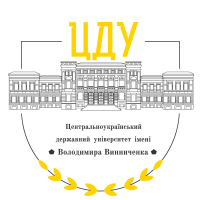FORMING OF LINGUISTIC COMPETENCIES IN THE COURSE OF «INTRODUCTION TO SLAVIC PHILOLOGY»
Keywords:
Slavistics, disciplines of historically-linguistic cycle; introduction to Slavic philology, historical grammar, linguistic competencies.Abstract
The article deals with the ways of forming of linguistic competencies in the course of «Introduction to Slavic philology». The author formulates the goal of the course: to enhance the special training of future Ukrainian language and literature teachers; prepare them for the linguistic disciplines of historical cycle «Historical grammar» and «History of Ukrainian literary language». Determines the main questions, answers to which promote forming of linguistic competencies, which are important for comprehensive education of a future philologist. What is the origin of Slavs and what territory can be considered their ancestral home? What does Proto- Slavic language represent, when did it exist, did modern Slavic languages retain their most ancient features? When and how did Old Slavic language emerge, what effect did it cause on other Slavic languages and why did it stop its development? Did Slavs have script in pre-Cyrillic age and when and how did Ukrainian script form? What is the relation between two Slavic alphabets – Cyrillic and Glagolitic, and how did Cyrillic script influence the formation of Ukrainian language’s graphic system? What traits must be at the basis of modern classification of Slavic languages? The main goals of the course are: to gain knowledge about ancient history of Slavs and Proto-Slavic language, its general laws and partial processes that left a mark in modern Slavic languages, Ukrainian among them; to determine the origin of Slavic script; gain knowledge about the first written literary language of Slavs – Old Slavic; master Cyrillic graphic, learn to read and interpret ancient Slavic texts; gain knowledge about the modern Slavic nations, as well as traits and classification of modern Slavic languages. The goals of the course determine the structure of its content modules: Module 1. Slavs in ancient times. Module 2. Proto-Slavic language. Module 3. Old Slavic language. Module 4. Origin of Slavic script.Graphic of the ancient Slavic monuments. Module 5. Slavic nations and languages. The course develops the students’ linguistic thinking, teaches them to understand and illustrate the use of language laws, analyze, synthesize and see the cause and effect connections that exist in language.
References
Колоїз Ж. В. Роль «Історичної граматики української мови» в підготовці вчителя- словесника. Філологічні студії: Науковий вісник Криворізького державного педагогічного університету. 2010. Вип. 5. С. 239–250. URL: https://doi.org/10.31812/filstd.v5i0.915
Крижанівська О. І. Навчальні курси історичного мовного циклу в підготовці філологів в українській вищій школі. Наукові записки. Серія Філологічні науки. Кіровоград, 2000. Вип. 22. – С. 19–23.
Лучик В. В. Вступ до слов’янської філології : підручник. К. : Академія, 2008. – 344 с.
Лучик В. В. Вступ до слов’янської філології : підручник. 2-е вид., випр. і доповн. К. : Академія, 2013. – 344 с.
Нестеренко Т. А. Наступність у навчанні мовознавчих дисциплін історичного циклу. Наукові записки. Серія : Філологічні науки, (мовознавство). Кропивницький, 2017. Вип. 151. – С. 251–258.
Півторак Г. Рецензії. Мовознавство. 2009. № 3–4. С. 133–136. – Рец. на кн. : Лучик В. В. Вступ до слов’янської філології : підручник. К. : Академія, 2008. – 344 с.
Чучка П. П. Вступ до слов’янської філології. У 2-х ч. К., 1988. Ч.1. 78 с.; 1999. Ч. 2. – 76 с.








